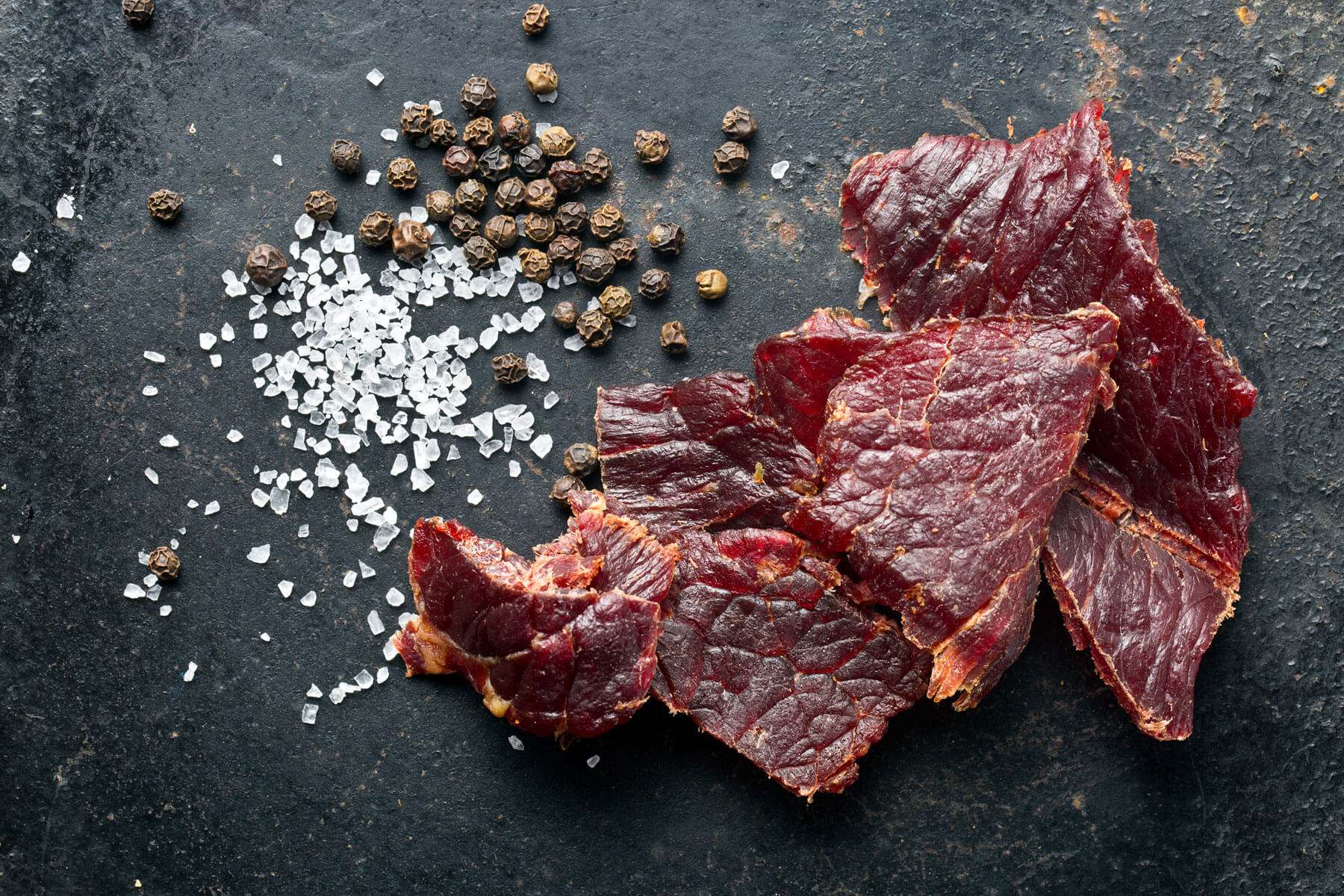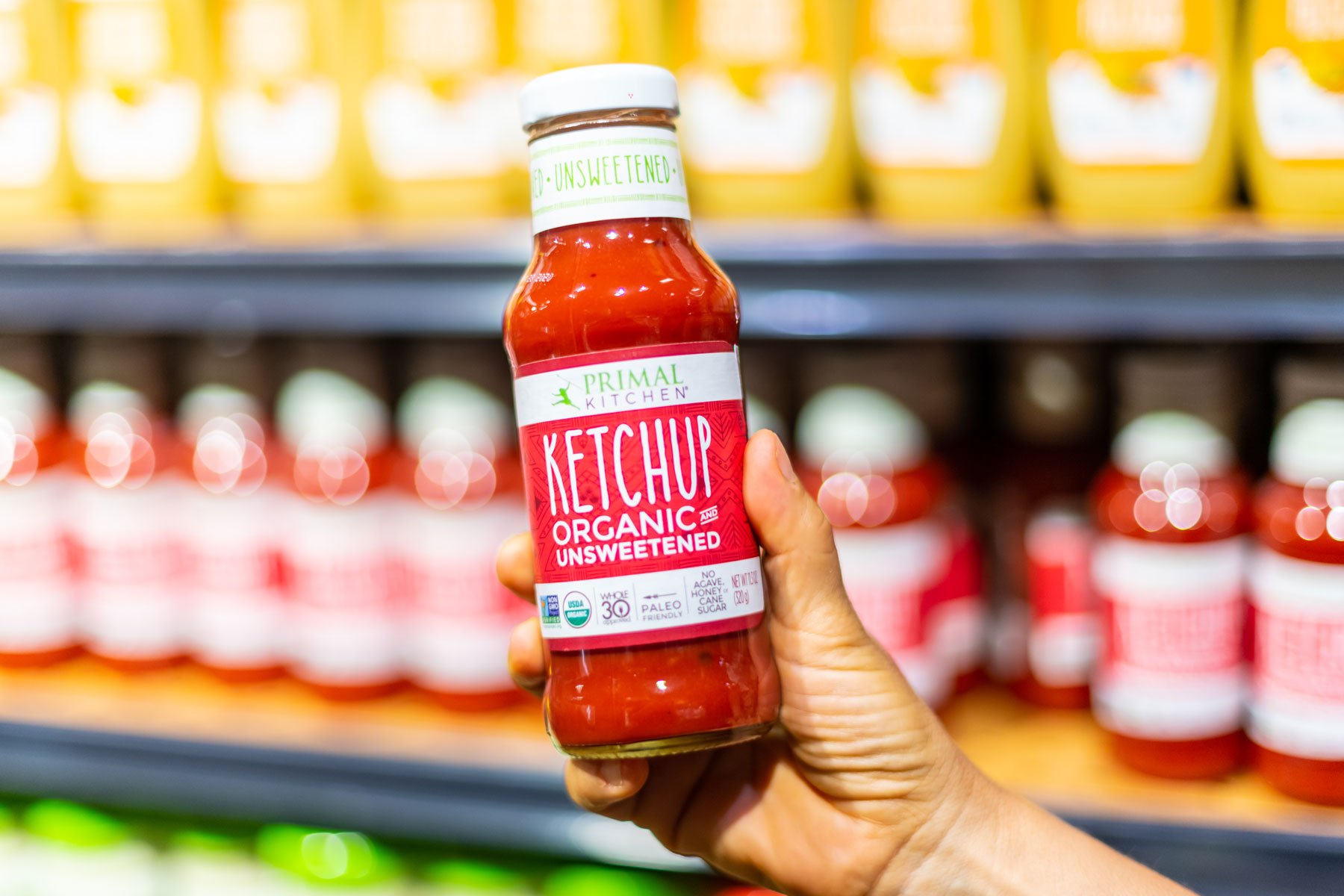Getting enough protein is essential for metabolic health. Including this macronutrient in meals and snacks can slow digestion, which leads to more gradual rises in post-meal blood sugar. It also helps build muscle, which absorbs glucose from your blood. In other words, protein is a major player in keeping your blood sugar level steady.
But you can’t always munch on grass-fed steak or hardboiled eggs, especially when you’re racing through the airport or digging in your gym bag for a snack. That’s where protein bars come in.
Convenient and often shelf-stable, bars can help you hit the recommended daily allowance (RDA) of 0.8 grams per kilogram of body weight per day. (Active adults may need closer to 1.2 to 2 g/kg.) The catch is that many brands contain additives and excess sugar.
Ready to raise the bar for your metabolic health? Read on to learn what to look for in a low-sugar protein bar and see a list of our favorites.
What to Look for in a Low-Sugar Protein Bar
Some protein bars are metabolically healthy snacks that can give you lasting energy, while others are desserts in disguise. Use these guidelines to identify the good ones.
1. Pick your protein
Depending on your dietary preferences and goals, different proteins may be better for you than others. Some of the most common sources include:
- Whey: When milk is curdled to make cheese, the remaining liquid is whey. Whey is a complete protein, which means it has all nine of the amino acids you need to get from food. It’s easily digested and doesn’t have a strong flavor.
- Soy: Soy is one of the few plant-based sources of complete protein. It’s a good option for vegans and people avoiding eggs and dairy.
- Pea: Most pea protein powders are made from yellow peas. They’re low in fat and rich in iron. Studies suggest pea protein may benefit the gut microbiome and, in turn, metabolic health.
- Meat: Some protein bars are made from dried or smoked meat, while others use a broth-based protein powder. Look for organic and grass-fed meats, which come from animals given no growth hormones and antibiotics.
- Hemp: Another complete plant protein, hemp is high in heart-healthy fiber and omega-3 fats.
- Brown rice: Most people think of brown rice as a carb, but a cup also packs nearly six grams of protein. Scientists have shown that brown rice protein delivers similar nutrition as soy and whey proteins.
Some of these proteins, such as whey and soy, go through different processing methods to create concentrates, isolates, and hydrolysates. This affects how much protein they contain and how easily they’re digested.
- Concentrates are often a dried version of the product that contain 35 to 80 percent protein. Carbs, fat, and minerals usually make up the rest.
- Much of those extras are removed from isolates, which contain 85 to 90 percent protein. (Whey isolate removes much of the lactose, making it a better option for those with a lactose intolerance.)
- Hydrolysates are broken down to create shorter chains of amino acids and are digested more quickly.
2. Check the protein content
Some bars pack in more sugar than protein. Look for a bar that provides at least 10 to 20 grams of protein.
3. Seek out a minimal ingredient list
The best bars don’t have a long list of ingredients and are mostly made of whole foods. Be aware that some brands add preservatives to keep their products shelf-stable. These include carrageenan and sodium benzoate, both of which are linked to increased inflammation. Other preservatives, like sulfites, can cause digestive issues, rashes, and shortness of breath in some people.
4. Aim for zero added sugars
Many protein bars are loaded with sugar; one popular option packs more than a candy bar. Most of this sweetness comes from added sugars, such as high fructose corn syrup, cane sugar, or fruit juices, which spike blood sugar.
But you should also scrutinize low-sugar options, which are often made with artificial sweeteners like aspartame and sucralose. These sweeteners may alter the gut microbiome and impact certain hormones that promote high blood sugar. Look for bars without any added sugars, or those made with natural sweeteners, like stevia and monk fruit, that won’t raise blood glucose levels.
5. Avoid vegetable and seed oils
Corn, soybean, safflower, and sunflower oils are common ingredients in protein bars. These oils are high in omega-6 fatty acids. Too much of this type of fat, especially without adequate intake of omega-3 fatty acids, may set the stage for inflammation and obesity.
6. Consider organic and non-GMO brands
These labels mean the products are made with fewer pesticides. That’s a good thing, because pesticides may impair metabolic health. One review of research found that exposure to pesticides and their contaminants increases the risk of metabolic syndrome by 30 percent.
Additionally, organic meat is made from animals that aren’t given antibiotics. Studies show that the antibiotic residue in food is linked to childhood obesity, and it may weaken the gut microbiome by reducing the number and diversity of bacteria.
10 Low-Sugar Protein Bars to Try
Given the number of protein bars sold in supermarkets, vending machines, and online, you could spend an entire day searching for ones that support metabolic health. Or you could take the guesswork out of your search with our picks below, which all taste great to boot.
Plant-Based Bars
 Bulletproof Protein Crisp Bar Salted Caramel
Bulletproof Protein Crisp Bar Salted Caramel
Flecked with pea protein crisps and roasted almonds, this bar has a nice balance of crunchy-chewy textures and salty-sweet flavor. Sweetened with monk fruit and stevia, it clocks in at only 1 gram of sugar.
Per serving (1 bar): 170 calories, 9 g fat (2 g sat), 14 g carbs, 10 g fiber, 1 g sugars, 11 g protein, 310 mg sodium
Price: $36* for 12 bars
Aloha Raspberry White Chocolate Protein Bar
Fans rave over this cookie-like bar’s delicate chocolate-berry mix, which is made with brown rice and pumpkin seed proteins. It’s also vegan and made with environmentally friendly ingredients, so you can feel good eating it. But it contains more carbs (26 grams) than the other bars on this list.
Per serving (1 bar): 230 calories, 9 g fat (3 g sat), 26 g carbs, 10 g fiber, 3 g sugars, 14 g protein, 70 mg sodium
Price: $33 for 12 bars
 Raw Rev Creamy Peanut Butter and Sea Salt
Raw Rev Creamy Peanut Butter and Sea Salt
This vegan bar gets its protein a blend of peanuts, chia seeds, hemp protein, and organic coconut oil. It has no added sugar or sweeteners and 13g of protein.
Per serving (1 bar): 190 calories, 13 g fat (2.5 g sat), 16 g carbs, 3 g fiber, 2 g sugars, 13 g protein, 150 mg sodium
Price: $29 for 12 bars
You’ll get a citrusy kick from this cashew-based bar. A main ingredient is hemp seeds, which deliver protein, essential fats, and micronutrients that support metabolic health. However, it’s sweetened, in part, with maple syrup, so each bar also contains 4 grams of sugar.
Per serving (1 bar): 220 calories, 13 g fat (1.5 g sat), 18 g carbs, 5 g fiber, 4 g sugars, 12 g protein, 100 mg sodium
Price: $37 for 12 bars
 Mezcla Italian Pistachio Chocolate
Mezcla Italian Pistachio Chocolate
Elevate your snack with this protein bar, which borrows its salty-sweet flavor profile from Sicilian gelato. Quinoa and pea crisps provide the protein and crunchy-chewy texture.
Per serving (1 bar): 170 calories, 6 g fat (2.5 g sat), 19 g carbs, 3 g fiber, 5 g sugars, 10 g protein, 150 mg sodium
Price: $33 for 12 bars
Made with almonds, pea protein, and chocolate chips, this chewy bar has a pleasant graham-cracker-like finish. It’s sweetened with stevia, so it’s one of the lowest in sugar (1 gram) on this list. It also contains lion’s mane, a mushroom that may reduce stress and improve mood.
Per serving (1 bar): 180 calories, 13 g fat (3 g sat), 9 g carbs, 7 g fiber, 1 g sugars, 12 g protein, 135 mg sodium
Price: $25 for 12 bars
Whey-Based Bar
 Atlas Protein Bars Mint Chocolate
Atlas Protein Bars Mint Chocolate
This bar tastes like a Girl Scout cookie but packs in 20 grams of protein for only 1 gram of sugar. It’s made with grass-fed whey protein, nut butter, coconut oil, and ashwagandha, a plant extract that’s shown to calm the nervous system.
Per serving (1 bar): 210 calories, 10 g fat (3.5 g sat), 18 g carbs, 10 g fiber, 1 g sugars, 20 g protein, 200 mg sodium
Price: $35 for 12 bars
Meat-Based Bars
 Epic Beef Sea Salt + Pepper Bar
Epic Beef Sea Salt + Pepper Bar
This bar consists of beef with onion, garlic, pepper, and celery powders, so it’s very low in carbs (3 grams) and high in protein (10 grams). At the same time, it contains a substantial amount of sodium, so limit consumption if you’re watching salt intake.
Per serving (1 bar): 130 calories, 9 g fat (4 g sat), 3 g carbs, 3 g fiber, 0 g sugars, 10 g protein, 550 mg sodium
Price: $32 for 12 bars
 Froning Farms Cranberry Jalapeno Bison Bar
Froning Farms Cranberry Jalapeno Bison Bar
Bison is lower in fat and higher in protein, iron, and vitamin B-12 than beef. It’s the star ingredient in this salty-sweet bar, which is flavored with jalapenos and dried cranberries.
Per serving (1 bar): 160 calories, 9 g fat (4 g sat), 7 g carbs, 0 g fiber, 5 g sugars, 12 g protein, 400 mg sodium
Price: $13 for 3 bars
 Paleovalley Superfood Bar Apple Cinnamon
Paleovalley Superfood Bar Apple Cinnamon
Developed by a holistic nutritionist, this bar is brimming with nutrient-rich ingredients, including organic spinach, broccoli, spirulina, and turmeric. The protein comes from grass-fed beef broth protein and cashew butter. It also contains dates, which adds a significant amount of carbs.
Per serving (1 bar): 190 calories, 12 g fat (3 g sat), 20 g carbs, 12 g fiber, 4 g sugars, 9 g protein, 125 mg sodium
Price: $38 for 12 bars
* The prices in this article reflect those listed by the retailer at the time of publication. Prices and local store availability may vary.
Levels has no affiliation or sponsorship with any food brand mentioned here or elsewhere, and we receive no revenue if you buy through any of these links.
Learn how your body responds to your diet
The best way to understand what foods help you achieve balanced blood sugar is with a continuous glucose monitor and an app like Levels to help you interpret the data. Levels members get access to the most advanced CGMs and personalized guidance to build healthy, sustainable habits. Click here to learn more about Levels.

 Evo Hemp Bars Lemon Bar
Evo Hemp Bars Lemon Bar








